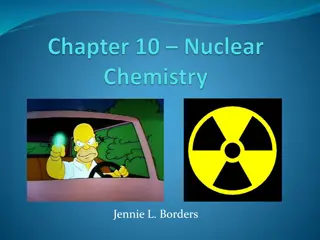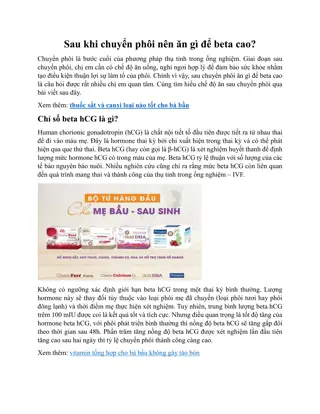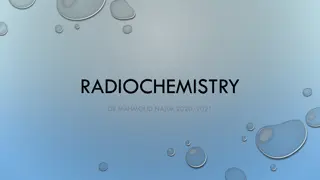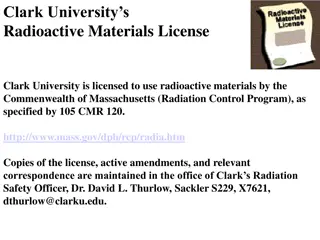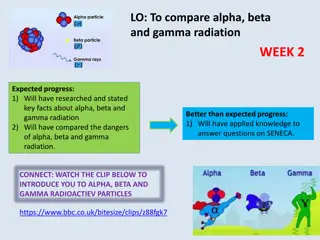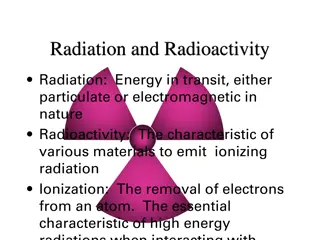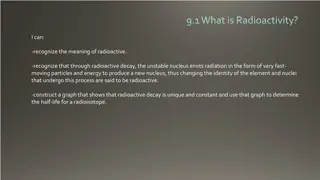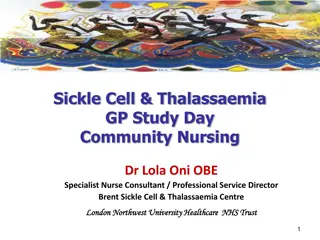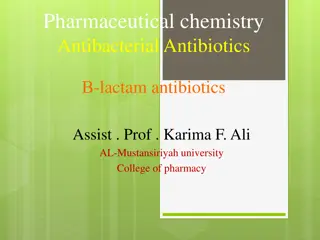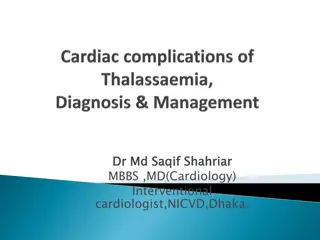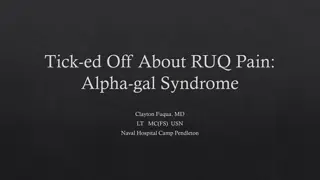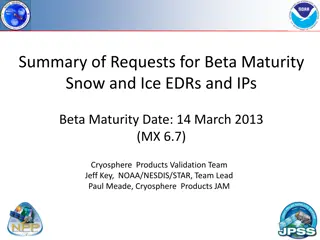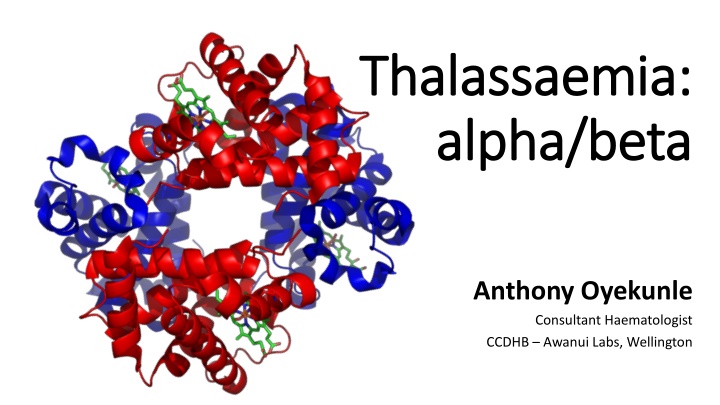
Thalassaemia: Clinical Challenges and Diagnosis
This information covers a case study of a 34-year-old Chinese woman in her first pregnancy with potential risks of iron deficiency anemia and haemoglobinopathy. The data includes detailed blood test results and discussions on the diagnosis of alpha thalassaemia.
Download Presentation

Please find below an Image/Link to download the presentation.
The content on the website is provided AS IS for your information and personal use only. It may not be sold, licensed, or shared on other websites without obtaining consent from the author. If you encounter any issues during the download, it is possible that the publisher has removed the file from their server.
You are allowed to download the files provided on this website for personal or commercial use, subject to the condition that they are used lawfully. All files are the property of their respective owners.
The content on the website is provided AS IS for your information and personal use only. It may not be sold, licensed, or shared on other websites without obtaining consent from the author.
E N D
Presentation Transcript
Thalassaemia: Thalassaemia: alpha/beta alpha/beta Anthony Oyekunle Consultant Haematologist CCDHB Awanui Labs, Wellington
Adult Haemoglobin Adult Haemoglobin HbA HbA2 2 1.8 1.8- -3.1% 3.1% HbA HbA 96 96 98.1% 98.1% HbF HbF <1.0% <1.0%
Case Study Case Study 34/F; Chinese ethnicity; Asymptomatic First pregnancy; 11 weeks gestational age Date Collected 18/06/20 15/08/20 2/10/20 2/11/20 25/11/20 18/12/20 23/12/20 Haemoglobin 105 101 98 100 104 109 110 g/L RBC 5.1 4.95 4.73 4.71 4.88 5.11 5.2 x 10^12/L Hct 0.34 0.33 0.32 0.32 0.34 0.35 0.34 MCV 66 67 69 68 69 68 66 fL MCH 21 20 21 21 21 21 21 pg Platelets 265 246 260 263 218 186 230 x 10^9/L WBC 7.7 8.6 9.3 8.4 9 8 14.7 x 10^9/L Neutrophils 5.3 6.5 6.7 5.8 6.8 6 12.9 x 10^9/L Lymphocytes 1.6 1.5 1.7 1.7 1.6 1.4 1.3 x 10^9/L
What are the clinically relevant What are the clinically relevant challenges in this case? challenges in this case? a. a. Mother at risk for iron deficiency Mother at risk for iron deficiency anaemia anaemia b. b. Mother at risk for thalassaemia major Mother at risk for thalassaemia major c. c. Baby at risk for Baby at risk for haemoglobinopathy haemoglobinopathy d. d. Options a. and c. Options a. and c. e. e. All of the above All of the above
Its most likely iron deficiency anaemia? It s most likely iron deficiency anaemia? 80 Ferritin 20 - 200 Normal 17 Iron 10 - 30 Normal 2.6 Transferrin 2.0 - 3.6 Normal 26 Transferrin saturation 16 - 45 Normal Or possibly, thalassaemia; carrier, trait or major? Or possibly, thalassaemia; carrier, trait or major? 92.3% 92.3% Haemoglobin A Haemoglobin A 96.5 - 98.1% Low 96.5 - 98.1% Low 2.2% 2.2% Haemoglobin F Haemoglobin F < 1.1% < 1.1% High High 5.5% 5.5% Haemoglobin A2 Haemoglobin A2 1.8 - 3.1% 1.8 - 3.1% High High Alpha Thalassemia ICT Positive Alpha Thalassemia ICT Positive Abnormal Abnormal
How can we reliably How can we reliably diagnose an alpha diagnose an alpha Thalassaemia? Thalassaemia?
+ trait Normal Homozygous + trait Hb H disease 0 trait Hydrops Fetalis
Chromosome 11 Chromosome 11 Chromosome 16 Chromosome 16 1 1 2 2 HbF HbF <1.0% <1.0% HbA HbA2 2 1.8 1.8- -3.1% 3.1% HbA HbA 96 96 98.1% 98.1%
1 X Chromosome 11 Chromosome 11 1 Chromosome 16 Chromosome 16 2 2 Hb Hb Barts Barts 4 4 HbH HbH 4 4
Capillary Electrophoresis Capillary Electrophoresis
How about beta How about beta Thalassaemia? Thalassaemia?
Chromosome 11 Chromosome 11 Chromosome 16 Chromosome 16 1 1 2 2 HbF HbF <1.0% <1.0% HbA HbA2 2 1.8 1.8- -3.1% 3.1% HbA HbA 96 96 98.1% 98.1%
Chromosome 11 Chromosome 11 Chromosome 16 Chromosome 16 1 1 2 2 X X HbA HbA2 2 >3.1% >3.1% HbF HbF >1.0% >1.0% HbA HbA <96% <96%
Thal major Thal trait Normal Thal intermedia 1 1 1 1 1 1 1 1 1 2 2 2 2 2 2 2 2 2 o o o + HbA: 90-96.5% HbA2: 3.5-5% HbF: 1-7% HbA: 10-50% HbA2: 5-10% HbF: 40-80% HbA: 96-98% HbA2: 2-3.5% HbF: < 1% HbA: 0% HbA2: 2-10% HbF: 90-98%
Need for Special Investigations Need for Special Investigations Haemoglobinopathies: most common single gene disorders in humans Around 7% of the world s population are carriers NZ population is becoming more ethnically diverse projected to be 36% non-European by 2043 through migration and differential fertility rates Carriers are often asymptomatic, but becomes clinically significant in women who are either pregnant or planning a pregnancy Hb electrophoresis, by HPLC or CE, can identify abnormal levels of HbA2, HbF, etc ICT assay is highly sensitive for small levels of Hb Barts, found in most cases of -thalassaemia; carrier, trait, HbH and Hb Bart s disease, including non-deletional forms
Immunochromatographic Immunochromatographic Assay for Assay for - -Thalassaemia Thalassaemia HbH inclusion body detection method historically achieved 24% sensitivity Poorly standardised and labour-intensive ICT achieves an overall sensitivity of 76- 89% for -thalassaemia mutations, but sensitivity can reach nearly 100% for the most severe forms ( 0 and HbH disease) Beta thalassaemia can cause false results False positive, as ICT cross-reacts with increased HbF levels False negative, if Hb Barts are absent or markedly reduced due to concomitant beta thal reducing available beta chains Cautious interpretation is required in complex cases Genetic testing is needed for definitive diagnosis in suspected cases 1. 2. Bunkall C, et al. Int J Lab Hematol. 2018;40(6):691-696. doi/10.1111/ijlh.12905. Nelson AC, et al. Int J Lab Hematol. 2019;41(3):397-403. doi/10.1111/ijlh.12994.
BSH Guidelines: Antenatal Screening/Testing of BSH Guidelines: Antenatal Screening/Testing of Pregnant Women Pregnant Women Test all patients for CBC and RBC indices as part of antepartum care Add Hb electrophoresis if Increased risk based on ethnicity: African, Middle Eastern, Southeast Asian, West Indian and Mediterranean ancestry MCV is low (<80 fL) Indicates risk for one of the thalassemia traits Serum ferritin levels recommended to check for possible iron deficiency anaemia If Hb electrophoresis is normal, follow up is still required to rule out alpha-thalassemia Abnormal Hb electrophoresis identifies a carrier Offer testing to partners of carriers to assess whether the foetus is at risk Refer to genetic counselling if both members of a couple are carriers
Questions and Comments? Questions and Comments?



